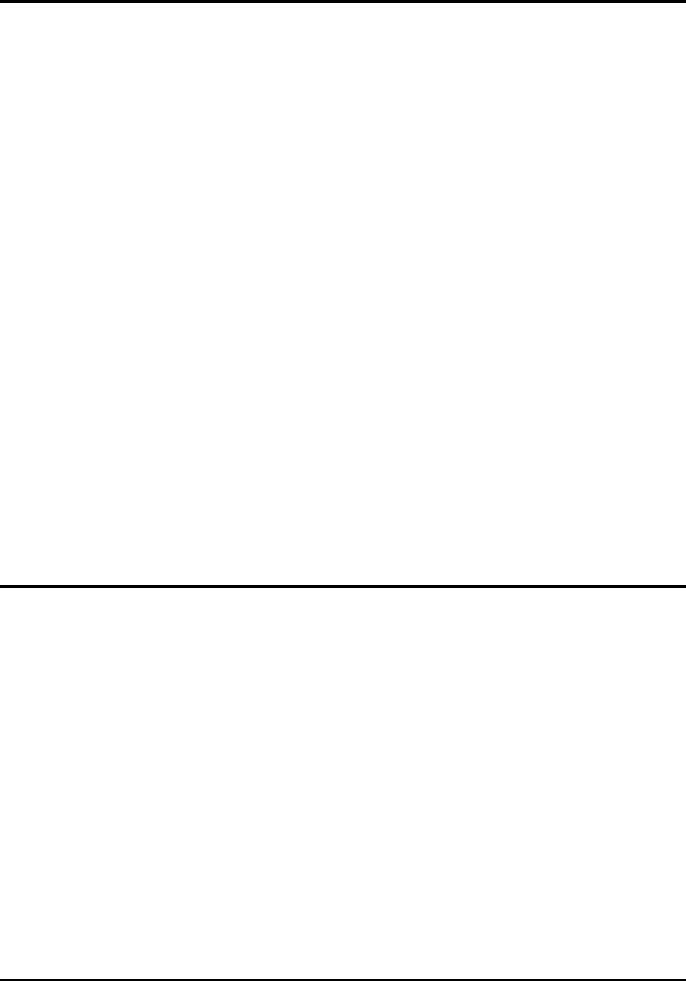Thurlby Thandar Instruments TG210, TG215, TG230 User Manual [en, de, fr, it]

THURLBY THANDAR INSTRUMENTS
TG210, TG215 & TG230
FUNCTION GENERATORS
INSTRUCTION MANUAL

Introduction
The TG210/TG215/TG230 are 2MHz function generators with waveforms of sine, triangle, ramp, pulse and DC from a variable amplitude 50Ω or 600Ω output (50Ω only on TG230). A TTL/CMOS output is also provided.
The frequency range is 0.02Hz to 2MHz selected by a seven decade range multiplier and calibrated vernier. Both the frequency vernier and the sweep input can give 1000:1 frequency change within a selected range.
The generator output level is 20Vpk-pk maximum from a 50/600Ω source. The level is set via a switched attenuator plus vernier with a total range of >60dB. DC offset is vernier adjustable over a ±10V range with centre detent for 0V. A 10:1 symmetry range permits ramp and pulse waveforms to be produced.
The TG215 and TG230 have digital readout of frequency, amplitude and offset with high resolution and fast update across the frequency range.
The TG230 also has internal LIN/LOG sweep with sweep output. Amplitude modulation of up to 100% is possible, using the internal 400Hz oscillator or an external source.
|
Table of Contents |
Specification |
2 |
Safety |
4 |
EMC |
6 |
Installation |
7 |
Operation |
8 |
Maintenance |
10 |
Instructions en Francais |
|
Sécurité |
11 |
Montage |
12 |
Utilisation |
13 |
Maintenance |
16 |
Bedienungsanleitung auf Deutsch |
|
Sicherheit |
17 |
Installation |
18 |
Betrieb |
19 |
Wartung |
22 |
Istruzioni in Italiano |
|
Sicurezza |
23 |
Installazione |
24 |
Funzionamento |
25 |
Manutenzione |
28 |
Instrucciones en Español |
|
Seguridad |
29 |
Instalacion |
30 |
Funcionamiento |
31 |
Mantenimiento |
34 |
|
|
|
1 |

|
|
Specification |
FREQUENCY |
|
|
Frequency Range: |
.02Hz to 2MHz in 7 overlapping decade ranges with fine adjustment by a |
|
|
vernier. |
|
Vernier Range: |
1000:1 on each range, except 2Hz and 20Hz range (>100:1). |
|
Vernier Accuracy: |
Typically ±5% of full scale for TG210; see Meter Accuracy for TG215 and |
|
|
TG230. |
|
SWEEP MODES |
|
|
INTERNAL (TG230 only) |
|
|
Sweep Range: |
1000:1 within each range, except 2Hz and 20Hz range (>100:1). |
|
Sweep Rate: |
Adjustable, typically 20ms to 20 secs. |
|
Sweep Mode: |
Linear or logarithmic. Sweep start and stop frequencies displayed at the |
|
|
press of a button. |
|
EXTERNAL |
|
|
Input Impedance: |
10kΩ |
|
Input Sensitivity: |
0 to 3V for 1000:1 sweep. |
|
Maximum Allowable |
|
|
Input Voltage: |
±10V |
|
Sweep Linearity: |
Better than 1% |
|
Maximum Slew Rate |
|
|
of sweep voltage: |
0.1V/us |
|
AMPLITUDE MODULATION (TG230 only) |
||
Depth: |
Variable 0 to 100% |
|
Frequency: |
400Hz (internal). DC to 100kHz (external). |
|
External Sensitivity: |
Approximately 2V peak-to-peak for 100% modulation. |
|
METER ACCURACY (TG215/TG230 only) |
||
Frequency: |
±1 digit on all ranges; reducing to 1% of full scale at: |
|
|
<2·30Hz on 20Hz range (SYM off) |
|
|
<·230Hz on 2Hz range (SYM off) |
|
|
and <2·30Hz on 200Hz range (SYM on) |
|
|
<·230Hz on 20Hz and 2Hz ranges (SYM on) |
|
Amplitude: |
Typically 5% of range; display corrected for attenuator setting. |
|
DC Offset: |
Typically 2%; display corrected for attenuator setting. |
|
Resolution: |
Frequency: |
0·05% of range full scale. |
|
Amplitude and DC Offset: |
0·5% of range full scale |
2

OPERATING MODES
(Specifications apply for the top decade of each frequency range and output 10V peak-to-peak into 50Ω termination).
SINE
Distortion: |
Less than 0.5% on 200, 2k and 20k ranges; less than 1% on 2, 20 and |
|
200k ranges; all harmonics >25dB below fundamental on 2M range. |
Amplitude Flatness: |
±0.2dB to 200kHz; ±1dB to 2MHz. |
TRIANGLE
Linearity: Better than 99% to 200kHz.
SQUAREWAVE
Rise and Fall Times: |
<100ns. |
Mark-Space Ratio: |
1:1 ±1% to 100kHz. |
DC
Range: ±10V (unterminated)
SYMMETRY
Symmetry Range: |
Variable typically between 1:9 and 9:1 (on top decade of each range), |
|
frequency divided by 10. Display shows correct frequency. |
OUTPUTS
50Ω
0dB Range: -20dB Range:
DC Offset Control Range:
600Ω (not TG230): TTL
SWEEP OUT (TG230 only)
Two switch-selectable ranges with 40dB vernier control within each attenuator range.
0.2V to 20V peak-to-peak from 50Ω (0.1V to 10V into 50Ω). 20mV to 2V peak-to-peak (10mV to 1V into 50Ω).
±10V from 50Ω. DC offset plus signal peak limited to ±10V (±5V into 50Ω). DC offset plus waveform attenuated proportionally in -20dB position.
Alternative output socket offering the same facilities as the 50Ω socket. Capable of driving CMOS and 2 standard TTL loads.
6V ramp from 600Ω.
GENERAL
POWER REQUIREMENTS
AC Input Voltage: |
220V-240V AC or 110V-120VAC ±10%, 50/60Hz, |
|
by rear panel adjustment; Installation Category II. |
Power Consumption: |
25VA max. |
Operating Range: |
+5°C to +40°C, 20% to 80% RH. |
Storage Range: |
-10°C to +65°C |
Environmental: |
Indoor use at altitudes up to 2000m, Pollution Degree 2. |
Size: |
260(W) x 88(H) x 235(D) mm |
|
(10.2 x 3.4 x 9.2") excluding handle and feet. |
Weight: |
1.9kg (4.2lb). |
Safety: |
Complies with EN61010-1. |
EMC: |
Complies with EN61326. |
3

Safety
This instrument is Safety Class I according to IEC classification and has been designed to meet the requirements of EN61010-1 (Safety Requirements for Electrical Equipment for Measurement, Control and Laboratory Use). It is an Installation Category II instrument intended for operation from a normal single phase supply.
This instrument has been tested in accordance with EN61010-1 and has been supplied in a safe condition. This instruction manual contains some information and warnings which have to be followed by the user to ensure safe operation and to retain the instrument in a safe condition.
This instrument has been designed for indoor use in a Pollution Degree 2 environment in the temperature range 5°C to 40°C, 20% - 80% RH (non-condensing). It may occasionally be subjected to temperatures between +5°C and –10°C without degradation of its safety. Do not operate while condensation is present.
Use of this instrument in a manner not specified by these instructions may impair the safety protection provided. Do not operate the instrument outside its rated supply voltages or environmental range.
WARNING! THIS INSTRUMENT MUST BE EARTHED
Any interruption of the mains earth conductor inside or outside the instrument will make the instrument dangerous. Intentional interruption is prohibited. The protective action must not be negated by the use of an extension cord without a protective conductor.
When the instrument is connected to its supply, terminals may be live and opening the covers or removal of parts (except those to which access can be gained by hand) is likely to expose live parts. The apparatus shall be disconnected from all voltage sources before it is opened for any adjustment, replacement, maintenance or repair.
Any adjustment, maintenance and repair of the opened instrument under voltage shall be avoided as far as possible and, if inevitable, shall be carried out only by a skilled person who is aware of the hazard involved.
If the instrument is clearly defective, has been subject to mechanical damage, excessive moisture or chemical corrosion the safety protection may be impaired and the apparatus should be withdrawn from use and returned for checking and repair.
Make sure that only fuses with the required rated current and of the specified type are used for replacement. The use of makeshift fuses and the short-circuiting of fuse holders is prohibited.
Do not wet the instrument when cleaning it.
The following symbols are used on the instrument and in this manual:-
Caution -refer to the accompanying documentation, incorrect operation may damage the instrument.
terminal connected to chassis ground.
alternating current.
4

EC Declaration of Conformity
We Thurlby Thandar Instruments Ltd
Glebe Road
Huntingdon
Cambridgeshire PE29 7DR
England
declare that the:
TG210, TG215 and TG230 Function Generators
meet the intent of the EMC Directive 2004/108/EC and the Low Voltage Directive 2006/95/EC. Compliance was demonstrated by conformance to the following specifications which have been listed in the Official Journal of the European Communities.
EMC |
|
|
|
|
Emissions: |
a) |
EN61326 (1998) |
Radiated, Class B |
|
|
b) |
EN61326 (1998) |
Conducted, Class B |
|
|
c) |
EN61326 (1998) |
Harmonics, referring to EN61000-3-2 (2000) |
|
Immunity: |
EN61326 (1998) Immunity Table 1, Performance B, referring to: |
|||
|
a) |
EN61000-4-2 (1995) Electrostatic Discharge |
||
|
b) |
EN61000-4-3 (1997) |
Electromagnetic Field |
|
|
c) |
EN61000-4-11 (1994) Voltage Interrupt |
||
|
d) |
EN61000-4-4 (1995) |
Fast Transient |
|
|
e) |
EN61000-4-5 (1995) |
Surge |
|
|
f) |
EN61000-4-6 (1996) |
Conducted RF |
|
Safety
EN61010-1 Installation Category II, Pollution Degree 2.
CHRIS WILDING TECHNICAL DIRECTOR 1 February 2007
5

EMC
This instrument has been designed to meet the requirements of the EMC Directive 2004/108/EC. Compliance was demonstrated by meeting the test limits of the following standards:
Emissions
EN61326 (1998) EMC product standard for Electrical Equipment for Measurement, Control and Laboratory Use. Test limits used were:
a)Radiated: Class B
b)Conducted: Class B
c)Harmonics: EN61000-3-2 (2000) Class A; the instrument is Class A by product category.
Immunity
EN61326 (1998) EMC product standard for Electrical Equipment for Measurement, Control and Laboratory Use.
Test methods, limits and performance achieved were:
a)EN61000-4-2 (1995) Electrostatic Discharge : 4kV air, 4kV contact, Performance A.
b)EN61000-4-3 (1997) Electromagnetic Field, 3V/m, 80% AM at 1kHz, Performance A.
c)EN61000-4-11 (1994) Voltage Interrupt, 1 cycle, 100%, Performance B.
d)EN61000-4-4 (1995) Fast Transient, 1kV peak (AC line), 0.5kV peak (signal lines), Performance B.
e)EN61000-4-5 (1995) Surge, 0.5kV (line to line), 1kV (line to ground), Performance A.
f)EN61000-4-6 (1996) Conducted RF, 3V, 80% AM at 1kHz (AC line only; signal connections <3m not tested), Performance A.
According to EN61326 the definitions of performance criteria are:
Performance criterion A: ‘During test normal performance within the specification limits.’
Performance criterion B: ‘During test, temporary degradation, or loss of function or performance which is self-recovering’.
Performance criterion C: ‘During test, temporary degradation, or loss of function or performance which requires operator intervention or system reset occurs.’
Where Performance B is stated it is because the parameters of the output signal may deviate beyond Specification under the test conditions, e.g. deviation from the set output amplitude during the Voltage Interrupt test. However, the possible deviations are still small and unlikely to be a problem in practice.
Cautions
To ensure continued compliance with the EMC directive the following precautions should be observed:
a)Connect the generator to other equipment using only high quality, double-screened cables.
b)After opening the case for any reason ensure that all signal and ground connections are remade correctly before replacing the cover.
c)In the event of part replacement becoming necessary, only use components of an identical type, see the Service Manual.
6

Installation
Mains Operating Voltage
Before making connections to the AC line source ensure that the operating voltage of the instrument is correctly set. The operating voltage is indicated by the orientation of the fuseholder. When the 230V marking is upwards the unit is set for operation over the range 198V to 264V. When the 115V marking is upwards the unit is set for operation over the range 99V to 132V. To change the operating voltage range, remove the AC line plug, pull out the fuse holder, replace the fuse with one of the appropriate rating (see below) and rotate the fuse holder before pushing it firmly back into place.
Fuse
The correct time-lag fuse must be fitted for the selected operating voltage.
For 230V operation use 125mA 250V time-lag For 115V operation use 250mA 250V time-lag.
Make sure that only fuses with the required rated current and of the specified type are used for replacement. The use of makeshift fuses and the short-circuiting of fuse holders are prohibited.
Mains Lead
When a three core mains lead with bare ends is provided this should be connected as follows:
BROWN |
- |
MAINS LIVE |
BLUE |
- |
MAINS NEUTRAL |
GREEN/YELLOW |
- |
EARTH |
WARNING ! - THIS INSTRUMENT MUST BE EARTHED
Any interruption of the protective conductor inside or outside the instrument will make the instrument dangerous. Intentional interruption is prohibited.
7

Operation
Power
The ON/OFF switch is on the rear panel of the instrument.
Frequency Selection
Frequency range is selected by a seven position multiplier switch with fine adjustment by calibrated vernier. Depressing the SYM button divides the indicated frequency by 10 on TG210; on TG215/TG230 the digital display correctly shows the resultant output frequency. The SYMMETRY control varies the duty cycle from 1:9 to 9:1 to produce sawtooth and variable pulsewidth waveforms. Optimum performance of the SYMMETRY control is achieved on the top decade of each frequency range.
TG215/TG230: with DISPLAY SELECT set to frequency the auto-ranging meter makes reciprocal measurements down to 2·30Hz (·230Hz on the 2Hz range); the display update rate in this mode is 130ms or 1 waveform period, whichever is the longer. Below these frequencies a fast measurement update rate is maintained by changing the measurement method but accuracy is reduced, see Specification. If a voltage is applied to SWEEP IN the display correctly shows the new generator frequency.
When SYM is selected the changeover in frequency measurement happens at ·230Hz on the 20Hz and 2Hz ranges.
Function Selection
The output waveform shape is selected by depressing one of the three function buttons, to give sine, square or triangle. With all three switches out (accomplished by half-depressing any one) the output will be a DC level only; this is useful as it permits input threshold testing of a circuit instead of having to connect up an external DC supply.
Main Output
The amplitude of the 50Ω MAIN output is controlled by the 2-position ATTENUATOR switch and AMPLITUDE control. Maximum output is 20 volts peak-to-peak from 50Ω and 10 volts peak-to- peak when terminated with a 50Ω load.
The AMPLITUDE control has greater than 40dB range and used in conjunction with the ATTENUATOR a range of 0dB to -60dB can be achieved. This provides a range of 20V peak-to- peak down to 20mV peak-to-peak, or 10V peak-to-peak down to 10mV peak-to-peak into 50Ω.
Greater attenuation can be achieved by using standard 50Ω BNC attenuators. To maintain waveform integrity only 50Ω cable should be used and the receiving end should be terminated with a 50Ω load. The 50Ω MAIN output will withstand a short circuit for a period of 10 minutes at maximum output and greater periods at lower output levels. However, damage will occur if an external voltage is connected to the output socket.
TG210/TG215: The MAIN output is also available from a 600Ω socket. The 50Ω and 600Ω sockets are not independent and should not be used together.
TG215/TG230: with DISPLAY SELECT set to amplitude, the peak-to-peak amplitude of the MAIN output is displayed. The display shows open circuit voltage (emf); the actual voltage at the socket will be half the displayed value when the output is terminated with its characteristic impedance.
DC Offset
The DC OFFSET control has a range of ±10 volts from 50Ω/600Ω in all output modes; the control has a centre detent for 0 volts. DC offset plus signal peak is limited to ±10V (±5V into the characteristic output impedance). DC offset plus waveform is attenuated proportionally in the -20dB position.
8

TG215/TG230: with DISPLAY SELECT set to DC offset, the offset level of the MAIN output is displayed. The display shows open circuit voltage offset (emf); the actual voltage at the socket will be half the displayed value when the output is terminated with its characteristic impedance.
Aux Output
The AUX output provides a fixed 0 to 5V TTL/CMOS pulse output at the same frequency, symmetry and phase as the 50Ω MAIN output and is capable of driving 4 standard TTL loads.
Sweep Input
The generator frequency can be swept, DC programmed or modulated by a suitable control voltage applied to the SWEEP IN socket. The instrument sums the SWEEP IN voltage with the internal control voltage derived from the FREQUENCY vernier to determine the operating frequency. With the DISPLAY SELECT switch in the frequency position on TG215/TG230, the display shows the resultant frequency. A positive voltage increases the frequency; for frequency control with positive-going DC inputs the vernier should therefore be set to the lower frequency limit of the range to be swept. For example, a 0V to +3V signal will sweep the generator 3 decades up from range minimum, set by the vernier, to range maximum.
Similarly, a negative voltage decreases the frequency and for negative-going DC inputs the vernier should be set to the upper frequency limit of the range to be swept. For example, a 0V to - 3V signal will sweep the generator 3 decades down from range maximum, set by the vernier, to range minimum.
To use a sweep signal which is symmetrical about ground, the vernier should be set to give a frequency at approximately the centre of the band to be swept.
Note: Non-linear operation may result when the sweep input voltage is excessive; that is, when the attempted generator frequency exceeds the range limits.
Sweep Mode Operation (TG230 only)
With sweep ON, achieved by pulling the RATE control knob to the out position, the output of the internal sweep generator is summed with the FREQUENCY vernier.
Frequency Selection
Using the FREQUENCY RANGE switches, select the lowest range within which the upper sweep limit can be set; in this way the best setting resolution and the widest sweep range can be realised. Select LIN or LOG as required with the STOP control knob; in is LIN and out is LOG.
Sweep Limits
To accurately set the sweep limits on the TG230 proceed as follows: Set the STOP control to minimum (fully anticlockwise).
Pull out the RATE knob to set sweep on and select LIN or LOG with the STOP knob.
Hold in the SET START button and set the START (lowest) frequency on the display using the FREQUENCY vernier; the START frequency must be set first. Now release the SET START button, hold in the SET STOP button and set the STOP (highest) frequency on the display using the STOP control; release the SET STOP button. Note that both the FREQUENCY vernier and the STOP control have a log characteristic when LOG mode is selected.
The sweep limits can be checked at any time by depressing the SET START or SET STOP buttons.
9

Sweep Out
The SWEEP OUT socket provides a 0V to 6V ramp from 600Ω impedance to drive the X-input of an oscilloscope or chart recorder. Terminating this output with a resistor will reduce the output amplitude. Terminating with 600Ω will halve the output giving 0V to 3V.
Holding in the SET STOP button holds the ramp at the maximum and can therefore be used to set full scale on the oscilloscope or chart recorder.
Note that when the SWEEP OUT is used to drive the X-input of the oscilloscope, the oscilloscope should be set to DC coupling and not AC coupling which will cause a double image at slow sweep speeds.
Sweep Rate
The generator sweeps both up and down at the speed set by the RATE control, i.e. it does not reset rapidly after the upward sweep. This has the advantage that the suitability of the selected sweep time can be continuously monitored.
Amplitude Modulation (TG230 only)
Depressing the AM ON/OFF button selects AM. The depth of modulation can be adjusted over a 0% to 100% range using the modulation control. When AM is selected the output amplitude will drop to 50% at 0% modulation.
With the EXT/INT button out, the modulation source is an internal 400Hz sinewave oscillator.
With the EXT/INT button in, external modulation is selected and the AM/SWEEP IN input becomes the AM input. If a signal is now applied with no DC offset, or if it is AC coupled, amplitude modulation of the generator output is achieved. A 2V peak-to-peak signal gives approximately 100% modulation with the modulation control at maximum. Modulating the generator with a squarewave gives step changes in the output amplitude which are suitable for testing signal compressors and automatic gain controlled circuits.
Applying a DC offset of approximately -1V gives suppressed carrier modulation. The DC offset should first be adjusted to suppress the carrier, and the modulating signal then applied.
Applying greater than -1V will invert the MAIN output with respect to the AUX output.
Maintenance
The Manufacturers or their agents overseas will provide a repair service for any unit developing a fault. Where owners wish to undertake their own maintenance work, this should only be done by skilled personnel in conjunction with the service manual which may be purchased directly from the Manufacturers or their agents overseas.
Cleaning
If the instrument requires cleaning use a cloth that is only lightly dampened with water or a mild detergent.
WARNING! TO AVOID ELECTRIC SHOCK, OR DAMAGE TO THE INSTRUMENT, NEVER ALLOW WATER TO GET INSIDE THE CASE. TO AVOID DAMAGE TO THE CASE NEVER CLEAN WITH SOLVENTS.
10
